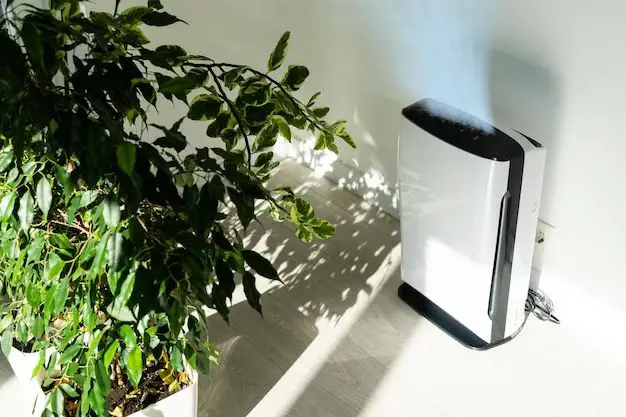Both air purifiers and ionizers can be effective at removing pollutants from indoor air, but they work in different ways and have some key differences. Here’s a quick overview of how each works and the main pros and cons of air purifiers vs ionizers.
Page Contents
How Do Air Purifiers Work?
Air purifiers use filters to physically capture particles like dust, dander, and smoke. Standard HEPA (high efficiency particulate air) filters can remove up to 99.97% of particles 0.3 microns in size. Activated carbon filters help remove odors and gases.
As air passes through the filters, pollutants stick to the filter medium. Over time, the filters become saturated and need to be replaced. Replacement frequency varies based on use and air quality, but filters typically need changing every 3-6 months.
Pros of Air Purifiers
- Remove a wide range of pollutants including dust, dander, mold, bacteria, viruses, smoke, VOCs, and more
- Reliably reduces indoor particle levels when properly sized for the room
- Does not generate ozone or other potentially harmful byproducts
- Removes particles from the air rather than allowing them to settle back down
Cons of Air Purifiers
- Can be expensive, especially for large or heavily polluted rooms
- Ongoing filter replacement costs
- Larger units can be noisy
- Don’t effectively clean entire homes; need one per room
How Do Ionizers Work?
Ionizers use electrodes to electrically charge airborne particles. This gives them a positive or negative charge so they are attracted to oppositely charged surfaces like walls, floors, curtains, and countertops.
Some ionizers also generate ozone gas, a lung irritant, as a byproduct of ionization. Ozone may further reduce odors, but introduces health risks.
Pros of Ionizers
- Inexpensive compared to most air purifiers
- Compact and portable
- Silent operation
- Help reduce airborne particles through electrostatic precipitation
Cons of Ionizers
- Limited effectiveness; particles settle out but are not removed
- May generate unsafe levels of ozone
- Not effective at removing gases or odors unless ozonation used
- Charged particles attach to surfaces like walls and floors
Main Differences Between Air Purifiers and Ionizers
| Air Purifiers | Ionizers |
|---|---|
| Use filters to capture particles | Use electrodes to electrically charge particles |
| Actually remove pollutants from the air | Cause particles to cluster and settle out faster |
| Effective for gases, odors, VOCs | Minimal gas and odor reduction |
| No ozone production | Ozone may be generated as a byproduct |
| More expensive to purchase and maintain | Very affordable upfront cost |
| Need one unit per room | Can be effective for whole rooms or small spaces |
Which is Better – Air Purifier or Ionizer?
For most homeowners, a standard HEPA air purifier is the better choice over an ionizer for cleaner indoor air.
Air purifiers actively remove a wider range of pollutants from the air. While ionizers may help lightly reduce airborne particles, they don’t completely clean the air. Purifiers also don’t generate any ozone or leave charged particle residue on surfaces.
However, ionizers are very affordable, silent, and compact. For someone who wants basic air cleaning on a budget, an ionizer could be a good option for a small room as long as ozone levels stay low.
Recommendations
- Choose a quality HEPA air purifier as the primary air cleaner for bedrooms, living rooms, and other main rooms where you spend time.
- Supplement with an ionizer for a workshop, laundry room, or other small polluted space if needed. Avoid ozone-emitting models.
- Change air filters as recommended and size your purifier appropriately for the room.
- Use other methods like vacuuming, venting, and controlling pollution sources to minimize indoor air contaminants.
Conclusion
Air purifiers are generally the most effective option for cleansing indoor air by trapping particles in filters. Ionizers are an affordable supplementary option, but limited in scope and potentially risky if they generate a lot of ozone. The best approach for clean indoor air is using HEPA air purifiers in combination with other methods like source control, ventilation, and regular cleaning.

